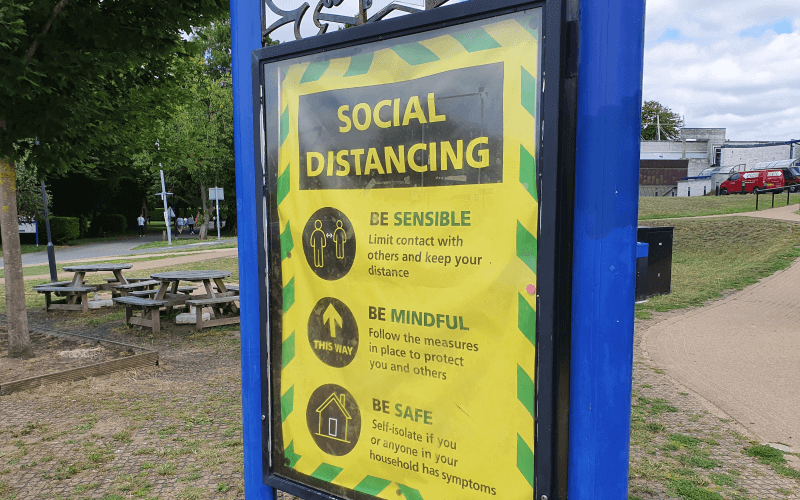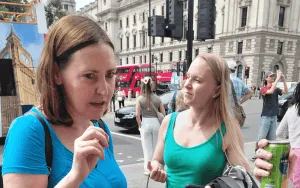The government’s updated guidance for those who are “clinically extremely vulnerable” (CEV) to COVID-19 has been criticised for its lack of detail and clarity, and its failure to announce new support for those who are particularly at risk from the virus.
The new guidance for the 2.2 million CEV people in England was published by the UK government this week as the number of new infections continues to rise across large parts of the country.
It describes extra measures that CEV people should take, depending on which of the three coronavirus alert levels applies to their local area.
Health and social care secretary Matt Hancock said the announcement would mean “every person most at risk from serious outcomes from the virus will have specific advice targeted to local levels, which they can follow to keep themselves as safe as possible, while ensuring they can also keep as much normality in their lives as possible”.
But the guidance is “less restrictive than previous shielding advice” and it says the government will, in the future, “only reintroduce formal shielding advice in the very worst affected local areas and for a limited period of time”.
It does not suggest – yet – that anyone in the CEV group adopts “formal shielding” and there is not yet any extra support being offered with accessing food, arranging deliveries of medicines and providing additional care or support.
The Department of Health and Social Care (DHSC) said it would write to CEV people in the future “if they are advised to adopt formal shielding again”.
The highest of the three levels – for those living in areas with “very high” local alert levels – advises those in the CEV group to work from home, to “stay at home as much as possible, and avoid all but essential travel” and “significantly reduce shopping trips” [for detailed advice on all three levels, visit the guidance page].
But it adds: “People in these areas are encouraged to still go outside for exercise, and can still go to school and to work if they cannot work from home.”
DHSC and the NHS are writing to all those in the CEV group, and their doctors, describing the changes to the guidance. Anyone advised to shield in the future will be written to again.
But Disability Rights UK (DR UK) criticised the new guidance for offering “little in the way of support to those who previously shielded, such as food parcels or deliveries, or medicine deliveries”.
It was also critical of the failure to change the list of conditions which lead to people being placed in the CEV group, even though disability groups including DR UK advised the government in March that the list was “not comprehensive enough”.
Kamran Mallick, chief executive of DR UK, said: “It is incredible that given that two-thirds of deaths from the virus have been those with disabilities and long-term health conditions, that the government is not providing robust support and protections for those most at risk.
“Given the virus is at similar levels to March, and we are being told to expect it to rise over the winter, it is astonishing that shielders are now, effectively, being told to be more relaxed.”
He was also critical of the guidance for those in work, which says that even those in the highest-risk areas “can still go to work” if they have no alternative.
Mallick said: “The financial provisions for those who cannot work are punitive. Not all employers will make adequate provisions for their disabled workers.”
He also said the lack of ringfenced supermarket deliveries for those who need to shield “makes no practical sense” as “the impacts of coronavirus on individual lives have not changed since March”.
He added: “Individuals on the shielding list should be able to make their own choices in conjunction with their clinical professionals. But this guidance doesn’t leave much room for that.
“It’s keep calm and carry on, unless the government issues a top-down instruction to order people to stay at home. There is no personal agency in that.
“This is yet another example that the government has not yet grasped the basic concepts of the social model of disability – that people need the right support frameworks in place for them to be able to truly exercise their agency.”
Vicky Foxcroft, Labour’s shadow minister for disabled people, said the guidance was “too vague”.
She said: “Once again, the government isn’t providing the assurances the 2.2 million people who have shielded in the past need.”
She said that questions remained about the support that will be available to those who are expected to shield in the future and about the CEV list and who is on it.
She said: “People are anxious; government guidance has done little to alleviate this.
“Seven months after this pandemic started, we can’t continue with this confusion – people need clear guidance.”
There was also anger over the guidance from disability and health charities, including concerns that CEV people in the highest risk areas were still being advised to travel to work if they cannot work from home, and about the lack of detail.
The MS Society condemned “the lack of financial and practical support to help people follow the government’s new advice”, while Age UK and Scope were both reportedly critical of the lack of clarity in the guidance.
*For sources of information and support during the coronavirus crisis, visit the DNS advice and information page
A note from the editor:
Please consider making a voluntary financial contribution to support the work of DNS and allow it to continue producing independent, carefully-researched news stories that focus on the lives and rights of disabled people and their user-led organisations.
Please do not contribute if you cannot afford to do so, and please note that DNS is not a charity. It is run and owned by disabled journalist John Pring and has been from its launch in April 2009.
Thank you for anything you can do to support the work of DNS…

 Disabled MP who quit government over benefit cuts tells DNS: ‘The consequences will be devastating’
Disabled MP who quit government over benefit cuts tells DNS: ‘The consequences will be devastating’ Absence of disabled people’s voices from assisted dying bill has been ‘astonishing’, says disabled MP
Absence of disabled people’s voices from assisted dying bill has been ‘astonishing’, says disabled MP ‘We will not give a single inch,’ disabled activists vow, as Kendall publishes disability cuts bill
‘We will not give a single inch,’ disabled activists vow, as Kendall publishes disability cuts bill